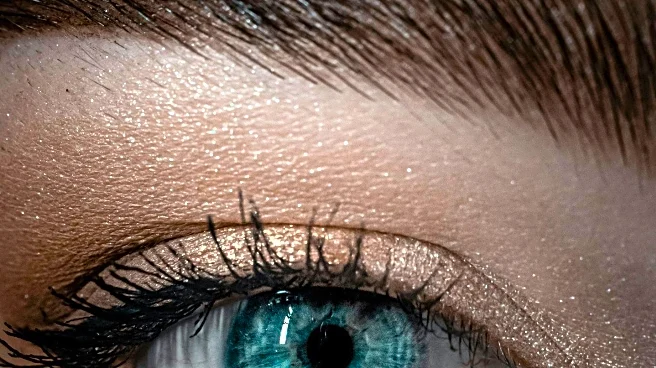What is the story about?
What's Happening?
Letybo, a K-beauty skin treatment similar to Botox, has been introduced to the U.S. market by BENEV in partnership with Hugel Inc. This treatment, known as letibotulinumtoxinA or Botulax, is FDA-approved for treating glabellar lines, commonly referred to as frown lines between the brows. Letybo offers softer, faster, cheaper, and more natural-looking results compared to other neuromodulators like Botox. Since its U.S. debut in March 2025, Letybo has positioned itself as a major competitor in the injection space, with 31 million treatments globally and approval in 65 countries. The treatment blocks acetylcholine release, reducing muscle contraction and softening facial expression lines. However, it shares similar side effects with Botox, such as bruising and headache, and is not recommended for pregnant or breastfeeding individuals.
Why It's Important?
The introduction of Letybo in the U.S. signifies the growing influence of K-beauty and K-Aesthetics in Western markets. This development could lead to increased competition in the cosmetic industry, potentially driving down prices and expanding consumer choices. U.S. consumers may benefit from the innovative approaches and philosophies of K-beauty, such as a skin-first approach and pursuit of skin quality. The competitive pricing and availability of Letybo could challenge established brands like Botox, influencing market dynamics and consumer preferences.
What's Next?
As Letybo gains traction in the U.S., it may prompt other cosmetic companies to innovate and adapt to the changing market landscape. The success of Letybo could encourage further collaborations between U.S. and international companies, fostering cross-cultural exchanges in beauty and aesthetics. Regulatory bodies may also monitor the impact of such treatments on public health and safety, potentially leading to new guidelines or standards in the cosmetic industry.
Beyond the Headlines
The rise of K-beauty in the U.S. reflects broader cultural shifts towards global beauty standards and the integration of diverse aesthetic practices. This trend may influence societal perceptions of beauty and self-care, encouraging consumers to explore new treatments and products. Additionally, the ethical considerations surrounding cosmetic treatments, such as accessibility and safety, may become more prominent as the industry evolves.
AI Generated Content
Do you find this article useful?













